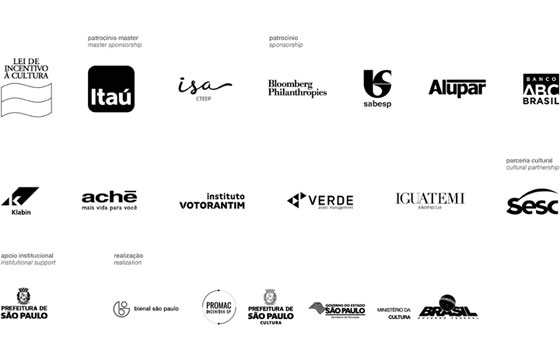Luiza Crosman apresenta uma profecia sobre pássaros autônomos que passaram por processo de bioengenharia e colaboram com humanos na construção de uma infraestrutura de larga escala no mundo da arte. Os sons foram captados por Negalê Jones no Pavilhão da Bienal e no Parque do Ibirapuera, para pensar o arquivo de um espaço de arte através da perspectiva do futuro.
Luiza Crosman presents a prophecy based on bioengineered autonomous birds collaborating with humans in the construction of a large scale art infrastructure. The sounds were recorded by Negalê Jones at the Bienal Pavilion and the Ibirapuera Park, in order to create a possibility to think at an art space's archive through a future's perspective.
Não se sabe ao certo como a associação entre os pássaros e humanos começou. Se é que houve algum dia um registro isso se perdeu. Alguns acreditam que era algo inevitável, uma vez que o espaço aéreo, antes desimpedido passou ao longo de anos a ser ocupado por altas construções e aeronaves. Outros pensam ser um dado evolutivo na genética das aves - se construíam ninhos e pequenas casas por que não estruturas de larga escala uma vez que seus corpos também haviam aumentado de tamanho? Primeiro foram as alterações biogenéticas, inevitáveis a princípio dada a quantidade de lixo tóxico, tanto na terra quanto no ar. E naturalizadas após gerações: as rotas migratórias passaram a incluir tais locais. Depois vieram as alterações mecânicas e próteses. Material não faltava já que os campos de depósito de material pesado, restos de fábricas e usinas, cobriam mais e mais a superfície terrena. O processo inicial de arquitetura dos pássaros começou pelos seus próprios corpos. Click. Click. Um rufar de asas.
No one really knows exactly how the association between birds and humans started. If there ever was a record, it was lost. Some believed that it was unavoidable, as the airspace, once unoccupied had been now taken by airships and high rises. Others thought it to be given by the genetic evolution of these birds — if they were able to built nests and small homes, why not large scale structures once their bodies had also grown in size? First the biogenetic alterations came, unavoidable given the quantity of toxic waste present both in the air and in the ground. As these became part of landscape, they also became part of migratory patterns. Then came mechanical enhancement and prosthetics. There was plenty of material to spare as the fields of materials leftover from factories and plants covered more and more of the earth’s surface. The initial architectural endeavour by the birds had started with their own bodies. Click. Click. The wings whirred.


